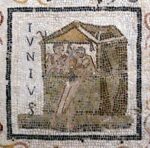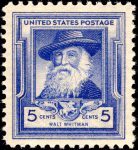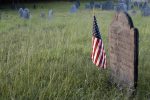Great homeschool teaching tips and wonderful little lessons for the week ahead, including: Flag Days, ancient eclipses, paternal poems, Great Charters, celebrated committees, splendid scientists, South African rivers, a toast to Old Glory, and more!
🌎 🇺🇸 SUNDAY STATES: Montana, Somalia, Spain, and More
Take a homeschool tour of the U.S. states and the countries of the world with the River Houses. This week: Montana, Somalia, South Africa, South Sudan, and Spain. Open up your atlas and almanac and follow along with us!
🔭 WATCHERS OF THE SKIES: Homeschool Astronomy for June
Our homeschool review of the educational wonders that you and your students can watch for in the northern hemisphere night sky during the month of June.
🦅 FRIDAY BIRD FAMILIES: Wagtails and Pipits
Come along on our homeschool tour of North American birds and pick up some great science and natural history lessons along the way. This week: the ground-loving Wagtails and Pipits.
🇫🇷 HOMESCHOOL HISTORY: Learning About D-Day 1944
Learn about the World War II Allied invasion of Normandy, France, on 6 June 1944, using live news broadcasts from that day.
📸 PHOTO CHALLENGE for June: “Steam” and “One is Different”
Calling all homeschool photographers! The Wikimedia Commons Photo Challenge is a great way for enthusiastic homeschool photography students to develop their skills and gain some recognition for their work. This month’s themes are “Steam” and “One is Different.” Take a look!
🇺🇸 WEEKLY AMERICAN HERITAGE: Mount Rushmore National Memorial
For America’s 250th anniversary, discover the history and landscape of the United States with your homeschool students. This week: Mount Rushmore National Memorial in South Dakota.
📚 LEARNING THE LIBRARY: The Literary 800s
Explore your local library and the whole universe of knowledge with our homeschool tour of the Dewey Decimal System. This month: the Literary 800s.
📺 HISTORICAL DOCUMENTARIES for Your Homeschool Summer
Twelve multi-part masterpieces of the documentarian’s art that you and your homeschool students can watch together and discuss over the summer. (Or at any other time of year!)
🖋 🌞 WONDERFUL WORDS (and Music!): “Sumer is i-cumin in”
“Loudly sing, cuckoo!” (Our ancient homeschool poem-of-the-week, anonymously, for the beginning of our summer term.)
🗓 QUICK FRESHES for Homeschool Families – Week of 1 June 2025
Great homeschool teaching tips and wonderful little lessons for the week ahead, including: Summer terms, Revolutionary resolutions, decisive days, fabulous flights, patriotic poems, Dewey decimals, Singaporean rivers, a toast to liberty, and more!
🌎 🇺🇸 SUNDAY STATES: South Dakota, Singapore, Solomon Islands, & More
Take a homeschool tour of the U.S. states and the countries of the world with the River Houses. This week: South Dakota, Singapore, Slovakia, Slovenia, and the Solomon Islands. Open up your atlas and almanac and follow along with us!
🗓 🍃 🏸 HAPPY HOMESCHOOL JUNE from the River Houses!
Happy homeschool June! Here are some little lessons, teaching traditions, and wonderful educational opportunities you and your students can watch for this month.
🗓 💪 HERCULES TERM and the River Houses Homeschool Year
We divide the homeschool year into four three-month terms in the River Houses. Today is the first day of Hercules Term, our summer term, named for the Great Hero of the Heavens. Hercules Term runs from June through August.
🖋 🎂 WONDERFUL WORDS: Happy Birthday to Walt Whitman
“Strong, ample, fair, enduring, capable, rich, / Perennial with the Earth, with Freedom, Law and Love, / A grand, sane, towering, seated Mother, / Chair’d in the adamant of Time.” (Happy birthday to the great Poet of America, Walt Whitman, born on this day in 1819.)
🦅 FRIDAY BIRD FAMILIES: Indigobirds, Old World Sparrows, and Allies
Come along on our homeschool tour of North American birds and pick up some great science and natural history lessons along the way. This week: the Indigobirds and Whydahs, the Weavers, the Estrildid Finches, and the Old World Sparrows.
🗓 NEW CALENDARS & PLANNERS for the 2025–2026 Homeschool Year
Print your own set of free homeschool planners and educational calendars for the upcoming homeschool year that begins in September.
🇺🇸 WEEKLY AMERICAN HERITAGE: Knife River Indian Villages National Historic Site
For America’s 250th anniversary, discover the history and landscape of the United States with your homeschool students. This week: Knife River Indian Villages National Historic Site in North Dakota.
🎓 🎉 HOMESCHOOL MUSIC & HISTORY: Let Us Rejoice!
Invite your homeschoolers to learn a few lines this week from the most famous of all medieval student songs – it’s an educational inheritance they can carry with them all around the world.
🇺🇸 “AFTER A HUNDRED YEARS / Nobody knows the Place”
“Weeds triumphant ranged / Strangers strolled and spelled / At the lone Orthography / Of the Elder Dead.” (A special peaceful homeschool poem-of-the-week, from Emily Dickinson, for Memorial Day.)
🎂 HOMESCHOOL HOLIDAYS: Happy Birthday, Ralph! (Emerson, that is)
Invite your homeschool students to discover the work of the great American essayist, poet, and philosopher Ralph Waldo Emerson, born this day in 1803. Emerson is wonderful summer reading for homeschoolers.
🗓 QUICK FRESHES for Homeschool Families – Week of 25 May 2025
Great homeschool teaching tips and wonderful little lessons for the week ahead, including: Memorial Days, new terms, critical eclipses, relativistic predictions, vocal virtuosos, amazing ascents, Senegalese rivers, a toast to new worlds, and more!
🌎 🇺🇸 SUNDAY STATES: North Dakota, Senegal, Sierra Leone, and More
Take a homeschool tour of the U.S. states and the countries of the world with the River Houses. This week: North Dakota, Senegal, Serbia, Seychelles, and Sierra Leone. Open up your atlas and almanac and follow along with us!
🇺🇸 🕊 HOMESCHOOL HISTORY: Memorial Day
“Rest, comrades, rest and sleep! / The thoughts of men shall be / As sentinels to keep / Your rest from danger free.” (Little homeschool lessons in literature, history, geography, and music, for the Memorial Day weekend.)
🦅 FRIDAY BIRD FAMILIES: Bulbuls, Starlings, Waxwings, and Allies
Come along on our homeschool tour of North American birds and pick up some great science and natural history lessons along the way. This week: the Bulbuls, Starlings, Waxwings, Silky-Flycatchers, Olive Warblers, and Accentors.
🖋 🎓 GRADUATION SEASON: “Set me free to find my calling”
“Bind me not to the pasture, chain me not to the plow, / Set me free to find my calling and I’ll return to you somehow.” (Our promising late May poem-of-the-week, from Marta Keen, for homeschool graduation season and the coming summer.)
🇺🇸 WEEKLY AMERICAN HERITAGE: Mesa Verde National Park
For America’s 250th anniversary, discover the history and landscape of the United States with your homeschool students. This week: Mesa Verde National Park in Colorado.
![[Weekly Homeschool Almanac]](https://riverhouses.org/wp-content/uploads/2018/08/calendar-generic-150x88.png)
![[Montana State Bird & Flower]](https://riverhouses.org/wp-content/uploads/2020/06/montana-stamp-1982a-101x150.png)
![[Homeschool Astronomy]](https://riverhouses.org/wp-content/uploads/2023/07/emoji-telescope.png)
![[Homeschool Science & Nature Study]](https://riverhouses.org/wp-content/uploads/2022/06/birds-wagtails-150x90.png)

![[Homeschool Photography Icon]](https://riverhouses.org/wp-content/uploads/2022/10/camera-flash-emoji-150x150.png)
![[Homeschool American Heritage]](https://riverhouses.org/wp-content/uploads/2024/09/america-250-150x120.jpg)
![[Dewey Decimal System]](https://riverhouses.org/wp-content/uploads/2018/09/dewey-decimal-classes-150x79.jpg)

![[South Dakota State Bird & Flower]](https://riverhouses.org/wp-content/uploads/2020/05/south-dakota-stamp-1982a-101x150.png)

![[Hercules Constellation Chart (1822)]](https://riverhouses.org/wp-content/uploads/2022/02/hercules-jamieson-1822-150x125.jpg)

![[Homeschool Science & Nature Study]](https://riverhouses.org/wp-content/uploads/2022/05/birds-indigobirds-150x99.png)
![[Homeschool Calendars and Planners]](https://riverhouses.org/wp-content/uploads/2023/05/calendar-example-150x64.jpg)



![[North Dakota State Bird & Flower]](https://riverhouses.org/wp-content/uploads/2020/05/north-dakota-stamp-1982a-103x150.png)
![[US Flag Stamp 2019]](https://riverhouses.org/wp-content/uploads/2022/05/us-flag-stamp-2019-150x132.jpg)
![[Homeschool Science & Nature Study]](https://riverhouses.org/wp-content/uploads/2022/05/birds-bulbuls-150x112.png)
